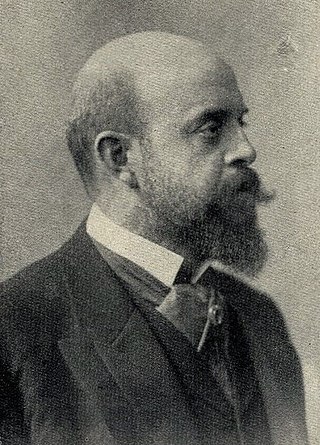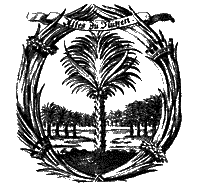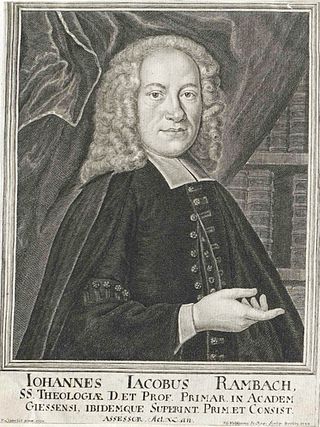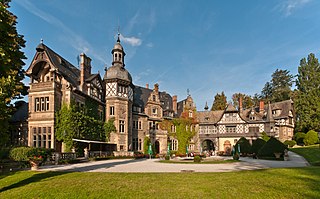Related Research Articles

Hesse or Hessia, officially the State of Hesse, is a state in Germany. Its capital city is Wiesbaden, and the largest urban area is Frankfurt, which is also the country's principal financial centre. Two other major historic cities are Darmstadt and Kassel. With an area of 21,114.73 square kilometers and a population of over six million, it ranks seventh and fifth, respectively, among the sixteen German states. Frankfurt Rhine-Main, Germany's second-largest metropolitan area, is mainly located in Hesse.

Ferdinand I was Emperor of Austria from March 1835 until his abdication in December 1848. He was also King of Hungary, Croatia and Bohemia, King of Lombardy–Venetia and holder of many other lesser titles. Due to his passive but well-intentioned character, he gained the sobriquet The Benign or The Benevolent.

August Bodo Wilhelm Clemens Paul von Trott zu Solz was a German politician.

The Fruitbearing Society was a German literary society founded in 1617 in Weimar by German scholars and nobility. Its aim was to standardize vernacular German and promote it as both a scholarly and literary language, after the pattern of the Accademia della Crusca in Florence and similar groups already thriving in Italy, followed in later years also in France (1635) and Britain.

The German Library in Frankfurt am Main (Deutsche Bibliothek abbreviated: DB) was a predecessor of the German National Library (DNB). From 1947 to 1990 it was the West German counterpart to the Deutsche Bücherei in Leipzig, founded in 1912, with the task of collecting German documents and publishing the national bibliography. After the reunification of Germany in 1990, the German Library and the German Library were merged to form "The German Library". Since 2006 it has been called the "German National Library". In 2006, around 8.3 million of the total holdings of the German National Library of 22.2 million units were stored in Frankfurt am Main. At the end of 2011, out of a total of around 27 million media copies, 10 million were archived in Frankfurt.

Immenhausen is a town in the district of Kassel, in Hesse, Germany. It is located 12 km north of Kassel on the German Timber-Frame Road. The town has 7,098 inhabitants as of July 2020, including the northern village of Mariendorf and eastern village of Holzhausen.

The Grand Duchy of Hesse and by Rhine was a grand duchy in western Germany that existed from 1806 to 1918. The grand duchy originally formed from the Landgraviate of Hesse-Darmstadt in 1806 as the Grand Duchy of Hesse. It assumed the name Hesse und bei Rhein in 1816 to distinguish itself from the Electorate of Hesse, which had formed from neighbouring Hesse-Kassel. Colloquially, the grand duchy continued to be known by its former name of Hesse-Darmstadt.

Selters is a village in the district Limburg-Weilburg, Hesse, Germany. It is situated at the Taunus side of the river Lahn and belongs to the municipality Löhnberg. The village has a total population of 319.

Philipp Wasserburg was a German Roman Catholic writer, publicist and member of the parliament of Hesse. He wrote under the pseudonym Philipp Laicus.

The English Church is a former Church of England church building in the German city of Bad Homburg in Hesse. It is listed as a historic monument and now houses a cultural centre.

Buchenau is a district of the market town Eiterfeld in the district of Fulda and has around 350 inhabitants.

Johann Jakob Pfeiffer was a German evangelical theologian, as well as a professor, and later, dean, at the University of Marburg.

Franz Georg Pfeiffer was a German legal scholar and politician.

Johann Jacob Rambach, also Johann Jakob Rambach was a Lutheran theologian and hymn writer.
Baron Wilhelm Hugo von Spitzemberg was a German soldier who became a favourite of King Charles I of Württemberg.

Ferdinand Eduard, Freiherr von Stumm, was a Prussian and German diplomat.

Ferdinand Carl, Freiherr von Stumm was a German diplomat and industrialist.

Rauischholzhausen Castle is a German castle located on the outskirts of Rauischholzhausen, a village in Ebsdorfergrund in the southeast of Marburg-Biedenkopf district in Hesse. Today, the castle belongs to the University of Giessen, which uses it as a conference facility. The castle is surrounded by the 32-hectare (79-acre) Rauischholzhausen Castle Park, an English landscape garden that was created together with the construction of the castle between 1871 and 1876.
Hugo Rudolf Christian von Stumm-Ramholz was a German industrialist, landowner, member of the state parliament and Prussian cavalry officer. He commissioned Ramholz Castle, built near Schlüchtern from 1893 to 1896.

Ramholz Castle is a German castle located in the hamlet of Ramholz in the Vollmerz district of the town of Schlüchtern, around 40 kilometres southwest of Fulda. The castle and park are cultural monuments according to the Hessian Monument Protection Act.
References
- ↑ "Hessische Biografie : Erweiterte Suche : LAGIS Hessen". www.lagis-hessen.de. Retrieved 2022-06-23.
- ↑ "Rau von und zu Holzhausen, Dorothea geb. Rau von und zu Holzhausen (+ 1611) / Porträt, Grabmal in Rauisch-Holzhausen, Ganzfigur - Deutsche Digitale Bibliothek". www.deutsche-digitale-bibliothek.de (in German). Retrieved 2022-06-23.
- ↑ "Les familles Von Garnier et Rau Von Holzhausen". www.lalsace.fr (in French). Retrieved 2022-06-23.
- ↑ "History, Architecture, Gardens". www.uni-giessen.de. Justus-Liebig-Universität Gießen . Retrieved 10 January 2024.